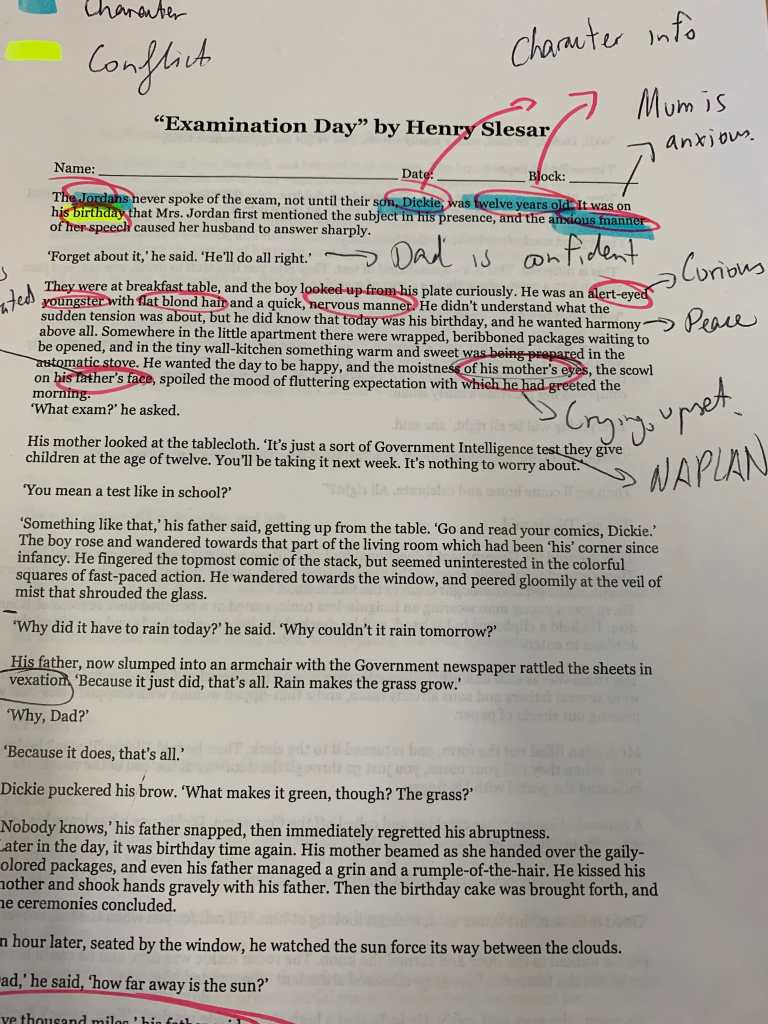The Situation
Your students need to learn how to annotate a short story.
The Solution
There is nothing like annotating a story to generate ideas and a great discussion. Annotating is the process of highlighting and making notes on a written text (For example, short story). Check out this annotation of Examination Day, by Henry Selsar.

What I communicate to students is that if it is important enough to highlight, then it is important enough to make an note about.
Before explaining the process of annotation and close readings, give students an outline of the notation that they should use to make notes. For example, you might use a criteria such as the following:
Colour Coding
Students can use a colour-coding system to highlight different aspects of narrative conventions and language features. Make it clear to students what they need to look for before reading commences.
- Use the colour BLUE for character (focusing on the main characters).
- Use GREEN for any conflict (internal or external) that arises during the story.
You may like to use a variety of different colours, but remember to use a key at the top of the page to keep track.
Symbols
Communicate to students the types of notation that they might use. Again, this can be a little communication overload. When modelling to students the process of annotation, make it clear when you are using certain notation – do not throw all of these symbols to students and expect them to pick it up instantly. It will take time.
- ? – Use a question mark (?) for questions that you have during the reading. Write the question on the page.
- ↵ – Draw an arrow (↵) when you make a connection to another text. Make note of this connection on your story.
You may like to generate your own symbols for different things you are looking for. Again, use a key to keep track.
Here is the process of annotation with a class:
- First and foremost, you need to explain what you are doing and how you are thinking when reading (For example, when highlighting a word, explain why you have chosen the word)
- Read the story aloud. As you read, the students should follow and make the same notes.
- When necessary, pause and talk yourself and the importance of the keyword. For example, “hmmm…I wonder why the author has chosen to mention the characters name in the first sentence. This is important. I am going to highlight this with blue highlighter as it indicates something about character.“
- Read on. If you come across words that you do not know the meaning of, highlight this to the students and encourage them to make a note on their page.
- Cyclically, get students to show their annotations to you as you read along.
- Get students to jump ahead and read for themselves (Or in pairs). They should annotates as they go along.
- Stop and reflect and discover what they have inferred about the character and central conflicts of the story.
This process can continue until the story is finished and you are ready to do something with the notes (For example, response writing).
14 thoughts on “Teaching.. How to Annotate a Short Story”